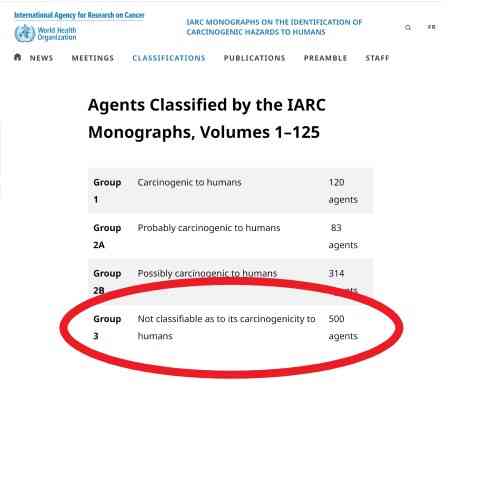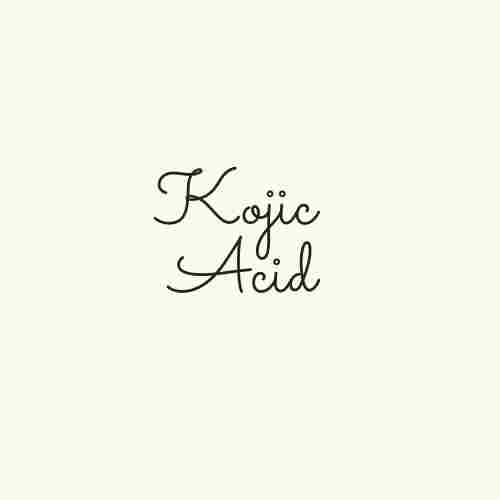The trade names “Dermawhite HS”, “Vegewhite” or my favourite, “Melarrest” are all trade name mixtures where the principal skin lightener is kojic acid.
Kojic Acid is a natural agent that’s obtained from koji malt, which has been used for the production of miso, soy sauce, and sake. Unsurprisingly, it originates in Japan. In Japan, it’s regulated as a skin whitening product, which means its a “quasi-drug.”
(Quasi-drugs are defined as ‘‘having a mild effect on the body but are intended for neither the diagnosis, prevention, nor treatment of disease, nor to affect the structure or function of the body.”)
In Asia, kojic acid is an extremely popular skin lightening agent.
In the USA, its been ubiquitous in products for some time now, but its concentration is limited to 1 percent (although you may find it in higher concentrations). It’s also commonly used in chemical peels along with hydroquinone and azelaic acid.
It is however controversial – it’s been banned in Japan and was recognised again as a skin lightening agent in 2008. Therefore, I cannot find instances of it being used as a standalone skin lightener and this is probably for two reasons.
First, it is sensitising to skin and can cause contact dermatitis and secondly, contact allergy. (see side effects below)
Secondly, the derivatives of kojic acid as well as other skin lightening ingredients are likely to be potent than kojic acid. There may be better ingredients to investigate.
Skin lightening mechanism
As far as I can tell, kojic acid interferes with the biosynthesis of melanin by chelating Copper ions at the site of the tyrosinase enzyme. This prevents tyrosinase enzyme from actually working and this prevents melanin from being formed. There appears to be a second mechanism, but quite frankly, do we need to know that?.
Side Effects
1) Contact dermatitis
Two hundred and twenty (220) patients were patch tested for suspected cosmetic related contact dermatitis. They were using kojic acid (1% – 5%). Of these, 5 patients developed facial dermatitis within 1 to 12 months of using the kojic acid-containing products (Nakagawa M et al 1995).
2) Contact allergy
Kojic Acid at 1% preparation was used to treat melasma. The topical treatment was applied twice daily for two months. A side effect of this treatment was contact allergy. (Prignano et al 2007).
According to the Mayo Clinic, Contact dermatitis usually occurs on areas of your body that have been directly exposed to the reaction-causing substance. The clinic indicates that signs and symptoms of contact dermatitis include:
- A red rash
- Itching, which may be severe
- Dry, cracked, scaly skin
- Bumps and blisters, sometimes with oozing and crusting
- Swelling, burning or tenderness
Contact allergy (CA) is an alteration of immune response with readiness to develop an inflammatory reaction against a specific substance of low molecular weight. Contact allergy is an actual immune response (Radoslaw Spiewak 2008)
Finally, carcinogenicity
I would be remiss if I did not mention that the IARC, a WHO agency classes kojic acid as a Group 3 agent (Not classifiable as to its carcinogenicity), which is good enough for me.

Source: International Agency for Cancer Research, Group 1 - 3 agentsMy comment section now works!
I am severely technically challenged. Therefore, my comment section has not been working for the best part of the past 12 months. Please leave a comment on your experience of using kojic acid or any other skin lightener or if you have any questions, I can help you answer.
Sources
Nico Smit, Jana Vicanova and Stan Pavel The Hunt for Natural Skin Whitening Agents Int. J. Mol. Sci. 2009, 10, 5326-5349
Nakagawa M, Kawai K, Kawai K. Contact allergy to kojic acid in skin care products. Contact Dermatitis. 1995;32(1):9-13
Prignano F, Ortonne G, Buggiani G, Lotti T. Therapeutical approaches in melasma. Dermatologic Clinics. 2007;25(3): 337-342
Burnett C L et al, Final Report of the Safety Assessment of Kojic Acid as Used in Cosmetics International Journal of Toxicology 29(Supplement 4) 244S-273S
Couteau C and Coiffard L Overview of Skin Whitening Agents: Drugs and Cosmetic Products Cosmetics 2016, 3, 27
Serra-Baldrich E, Tribó MJ, Camarasa JG, 1998, Allergic contact dermatitis from Kojic
acid. Contact Dermatitis 39, 86-87
SCCP/1182/08 Scientific Committee on Consumer Products Opinion on kojic acid
Radoslaw Spiewak Patch Testing for Contact Allergy and Allergic Contact Dermatitis The Open Allergy Journal, 2008, 1, 42-51
Kindred C Skin-Lightening Agents: An Overview of Prescription, Office-Dispensed, and Over-the-counter Products A Supplement to Cutis® • MAY 2013
Saeedi M et al Kojic acid applications in cosmetic and pharmaceutical preparations Biomedicine & Pharmacotherapy Volume 110, February 2019, Pages 582-593
Zolghadri S A comprehensive review on tyrosinase inhibitors JOURNAL OF ENZYME INHIBITION AND MEDICINAL CHEMISTRY
2019, VOL. 34, NO. 1, 279–309
